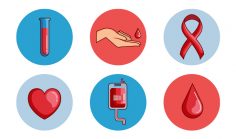There are many reasons for developing a sore throat—the usual culprits include: allergies, colds, post-nasal drip from allergies or colds, overuse of voice, smoking too many cigarettes, viral infection, and bacterial infections. Only 5 to 10% of sore throats are caused by strep throat—named for the Streptococcus bacterium that causes the infection. Strep throat is a more severe form of sore throat that is typically treated with antibiotics. Most sore throats are caused by viruses and do not respond to antibiotic treatment.
A strep infection of the throat often leads to intense discomfort and pain in the throat, which may be accompanied by difficulty swallowing or speaking. Fever is common, and often, the tonsils are covered with a white layer of pus. You will likely have swollen, tender lymph nodes in your neck, and feel unwell. Sometimes, strep throat is accompanied by a cough or runny nose—but this is not due to the strep bacterium, it means that you may have a viral upper respiratory infection with symptoms of a cold in addition to strep. Children may develop a rash when they have strep throat–strep infection with a rash is commonly called scarlet fever.
It’s important to distinguish between viral and bacterial causes of sore throats—treatment for one is not treatment for the other. It is easy for your healthcare provider to perform a rapid strep test, which typically indicates whether Streptococci are present in your throat. As well, a culture sample can be taken with a cotton swab of your throat, and examined in a lab for bacterial growth. The culture test takes about 24 hours before Streptococci can be identified.
Untreated strep throat can be dangerous. It can lead to rheumatic fever, a disease that damages the heart valves and affects joints. Glomerulonephritis, a kidney inflammation, which can result in impaired function of the kidney, may occur as well if the strep infection is not properly treated. The good news is that due the wide availability of antibiotics, these conditions are rarely seen today.
If you suspect that you may have strep throat, visit your healthcare provider to get tested. Do not begin taking any antibiotics until a culture or strep test has confirmed that you have strep, since even a single dose of antibiotic can influence test accuracy. Seek immediate medical help if you have a swollen throat that is causing breathing difficulties or severe problems with swallowing.













